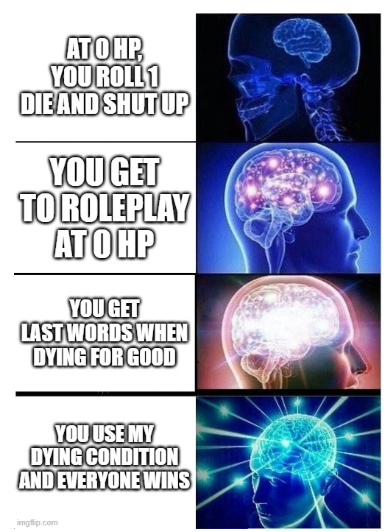I take a system inspired by the video game Wildermyth, where the player gets to decide what happens at 0 HP.
Option 1: You fall unconscious. Your fate is out of your hands.
Option 2: You die, but... You might go out in a blaze of glory, or inspire an ally, but you're dead for good. At least it's a good death, which is better than some get.
Option 3: You live, but... You might lose an eye, or a magic item gets destroyed, but you manage to escape. You're still out of the fight, but you live to see another.
